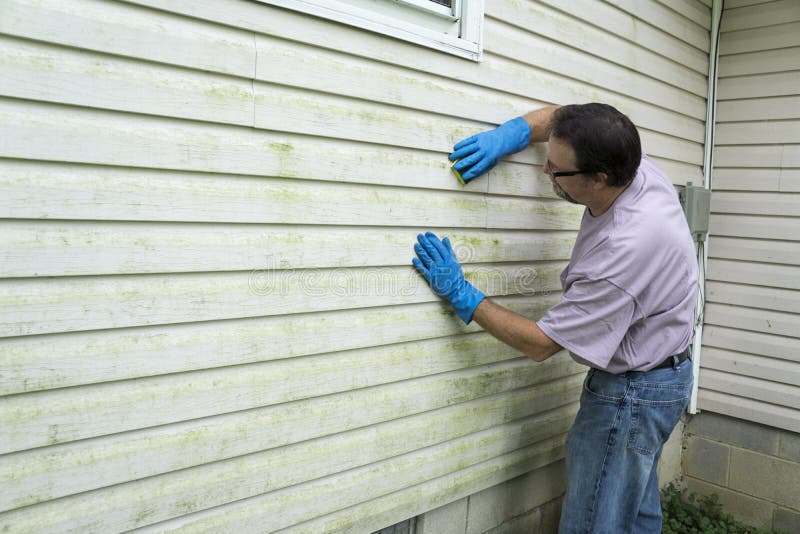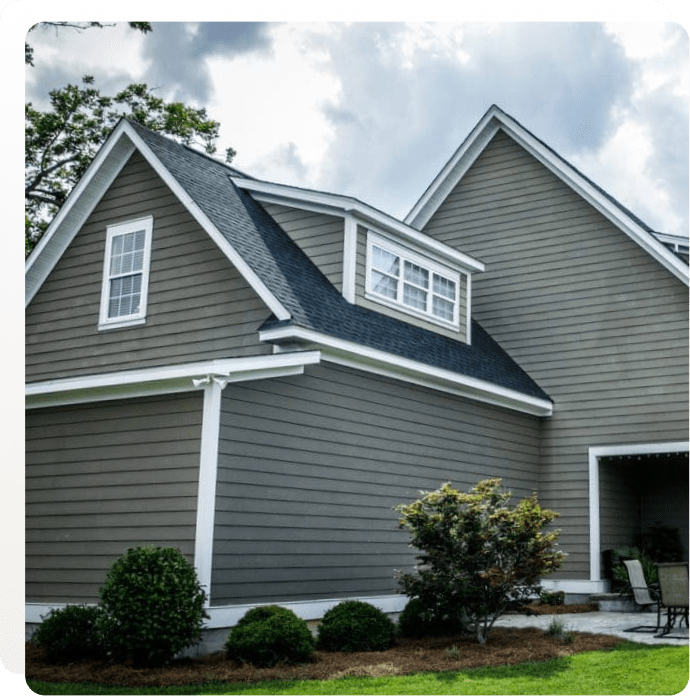The Essential Guide to the Numerous Sorts Of House Siding and Their Distinct Advantages
In the realm of home enhancement, selecting the best exterior siding is a vital choice that impacts both aesthetic charm and functional performance. With so several alternatives to take into consideration, which house siding product absolutely stands out for your specific job?
Wood Exterior Siding
Wood home siding, a prominent option for domestic exteriors, supplies an ageless aesthetic that integrates natural beauty with architectural stability. This exterior siding product is readily available in various styles, including clapboard, roof shingles, and board-and-batten, allowing home owners to personalize their façade to match their design choices. Timber exterior siding is typically crafted from sturdy varieties such as cedar, redwood, or want, which are understood for their strength and capability to withstand ecological stress factors.
One of the key benefits of wood siding is its outstanding insulation residential properties, which can contribute to power effectiveness and reduced heating prices. Furthermore, timber home siding is biodegradable, making it an ecologically friendly choice when sourced sustainably. Normal upkeep, consisting of painting or discoloration, can lengthen its life expectancy and boost its appearance, permitting house owners to maintain the natural appeal of the timber.
However, prospective drawbacks consist of susceptibility to insects, rot, and weather condition damage, requiring sufficient therapy and maintenance - morris siding contractor. Regardless of these problems, when correctly cared for, wood house siding can offer a long lasting and gorgeous remedy that boosts the personality of a home while providing a warm, welcoming environment

Vinyl Home Siding
Plastic exterior siding has actually become a leading choice for property owners looking for a low-maintenance exterior choice that incorporates resilience and affordability. This versatile material is crafted from polyvinyl chloride (PVC), making it immune to different climate problems, consisting of wetness and UV rays. Consequently, plastic siding does not warp, rot, or discolor, ensuring long-lasting aesthetic charm.
One of the primary advantages of plastic house siding is its substantial variety of styles and shades, enabling home owners to attain the wanted seek their residential property without the requirement for frequent repainting. In addition, vinyl home siding is very easy to set up, which can substantially minimize labor costs throughout building or restoration projects.
Plastic exterior siding additionally adds to power performance. Numerous alternatives function insulation backing, which boosts thermal performance, helping to keep comfortable indoor temperatures and possibly reducing energy bills. Additionally, its smooth surface promotes simple cleansing, requiring only routine washing with a garden tube to get rid of dust and particles.
Fiber Cement Home Siding
Fiber cement exterior siding has acquired grip amongst property owners and contractors alike due to its amazing combination of resilience and aesthetic versatility. Composed of a combination of cellulose, sand, and cement fibers, this exterior siding option is engineered to withstand severe climate condition, consisting of high winds, heavy rainfall, and temperature level fluctuations, making it a durable option for property outsides.
One of the key benefits of fiber concrete siding is its resistance to bugs, such as termites, and its non-combustible nature, offering improved fire safety. morris siding contractor. Furthermore, it is readily available in a wide variety of structures, designs, and shades, permitting home owners to accomplish their preferred aesthetic without giving up efficiency
Another benefit is its low maintenance demands; fiber visit the site concrete siding typically calls for painting or staining every 5-10 years, which is less constant than other products. In addition, its long life adds to a lower overall expense of ownership, as it decreases the need for frequent repair services or replacements.
Inevitably, fiber cement house siding represents an outstanding financial investment for those looking for a resistant, eye-catching, and flexible outside alternative, incorporating both kind and feature to enhance the home's curb appeal.
Steel Exterior Siding
The attraction of metal siding depends on its durable resilience and modern-day aesthetic charm, making it a favored choice for modern style. Available in materials such as light weight aluminum and steel, steel siding offers an array of shades and finishes, allowing house owners to achieve an individualized look that enhances their design vision.

Energy performance is another significant advantage, as many steel siding products are developed with insulation alternatives that help control indoor temperatures. This can result in reduced power costs with time. Furthermore, metal siding is usually recyclable, making it an eco-friendly option for sustainability-minded house owners.
The setup procedure for steel home siding can be reasonably simple, leading to a quicker turnaround time for building and construction tasks. On the whole, metal house siding combines capability and style, making it a useful choice for those seeking a read this visually appealing and enduring outside surface.
Brick and Rock House Siding
Block and rock house siding sticks out as an ageless choice that improves the aesthetic charm of any kind of home. Known for their toughness and reduced upkeep, these materials offer a phenomenal return on financial investment while elevating the home's aesthetic charm. Offered in numerous shades, textures, and patterns, brick and stone can be customized to fit diverse building designs, from conventional to modern-day.
Among the primary advantages of brick and rock siding is their energy efficiency. Both products have natural insulating residential or commercial properties that aid manage interior temperature levels, potentially reducing heating and cooling costs. Additionally, they offer superior fire resistance contrasted to other home siding alternatives, adding to enhanced security.
One more advantage is their longevity. Brick and stone can last for years, commonly calling for minimal upkeep past occasional cleaning. Unlike wood exterior siding, they are invulnerable to bugs and rot, making certain a durable outside that endures the aspects.
Final Thought
In recap, the choice of home siding dramatically influences a home's visual charm, power performance, and upkeep demands. Each kind of exterior siding-- whether wood, vinyl, fiber metal, concrete, or block and stone-- offers unique advantages customized to numerous home owner preferences and ecological problems. Comprehending these options enables educated choices that boost both the resilience and visual charm of household outsides. Inevitably, selecting the best exterior siding is vital for achieving an equilibrium between functionality and layout in domestic architecture.
One of the key benefits of timber siding is its exceptional insulation residential or navigate to these guys commercial properties, which can add to energy effectiveness and reduced heating expenses. In addition, wood home siding is naturally degradable, making it an environmentally friendly alternative when sourced sustainably.One of the primary benefits of steel house siding is its resistance to various ecological variables.Energy effectiveness is an additional significant advantage, as lots of steel siding products are developed with insulation alternatives that assist control interior temperatures. Each type of home siding-- whether timber, plastic, fiber cement, block, or steel and stone-- provides special benefits tailored to different house owner choices and ecological problems.